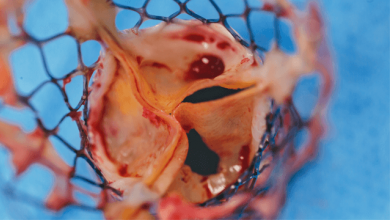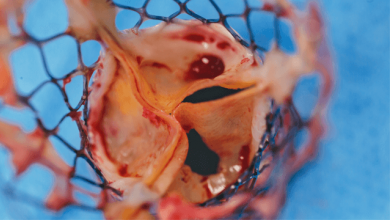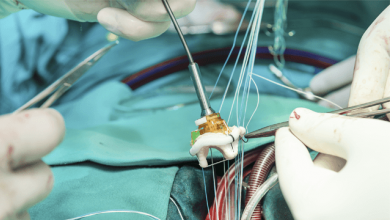Search results
PROMOTED
Author(s):
Nicolas M Van Mieghem
,
Kendra J Grubb
,
David Hildick-Smith
,
et al
Start date:
Mar 26, 2024
Predilatation and TAVI
Author(s):
Matteo Pagnesi
,
Luca Baldetti
,
Paolo Del Sole
,
et al
Added:
3 years ago
Article
Author(s):
Alessandra Laricchia
,
Barbara Bellini
,
Vittorio Romano
,
et al
Added:
3 years ago
Transcatheter aortic valve implantation (TAVI) is included in guidelines for the treatment of severe symptomatic aortic stenosis (AS) in patients with intermediate to high risk for standard surgical therapy.1 The gender-related difference in the pathophysiology of heart disease (and consequently in its clinical course and treatment) has already been identified as an issue in interventional…
View more
Annular Rupture During TAVI
Author(s):
JJ Coughlan
,
Thomas J Kiernan
,
Darren Mylotte
,
et al
Added:
3 years ago
Article
Author(s):
Roberto Spina
,
Chris Anthony
,
David WM Muller
,
et al
Added:
3 years ago
Transcatheter aortic valve replacement (TAVR) with either the balloonexpandable Edwards SAPIEN XT valve (Edwards Lifesciences, Irvine, California), or the self-expandable CoreValve prosthesis (Medtronic, Minneapolis, Minnesota) has become the established therapeutic modality for severe aortic valve stenosis in patients who are not deemed suitable for surgical intervention due to excessively high…
View more
Author(s):
Sveeta Badiani
,
Sanjeev Bhattacharyya
,
Nikoo Aziminia
,
et al
Added:
2 years ago
Author(s):
Pascal Thériault-Lauzier
,
Marco Spaziano
,
Beatriz Vaquerizo
,
et al
Added:
3 years ago
Valvular Disease
Aortic valve
Severe symptomatic aortic stenosis (AS) bears a dismal prognosis. The mean survival is 2.0 to 4.7 years after the onset of angina, 0.8 to 3.8 years after the onset of syncope and 0.5 to 2.8 years after the onset of congestive heart failure.1 Surgical aortic valve replacement (SAVR) is the mainstay of treatment for these patients.2 In the last decade transcatheter…
View more
Author(s):
John Jose
,
Gert Richardt
,
Mohamed Abdel-Wahab
Added:
3 years ago
Transcatheter aortic valve implantation (TAVI) has undergone tremendous technological advancements since the first successful implantation in 2002 for symptomatic severe aortic valve stenosis (AS).1 It is currently considered as the standard of care for severe AS patients who have high surgical risk or may be deemed unsuitable for surgery.2 Broadly, there are two main categories of transcatheter…
View more
Anticoagulation after TAVI
Author(s):
Antonio Greco
,
Davide Capodanno
Added:
3 years ago
Article
Author(s):
John Phineas O’Donnell
,
Crochan J O’Sullivan
Added:
3 years ago
The demand for replacing degenerated bioprosthetic valves (BPVs) is steadily rising owing to the increasing burden of heart disease, ageing populations, advances in surgical intervention and limited durability of current-generation surgical BPVs. The issue is exacerbated by the increasing trend of surgical BPV replacement, especially in younger patients who are likely to require future…
View more

















